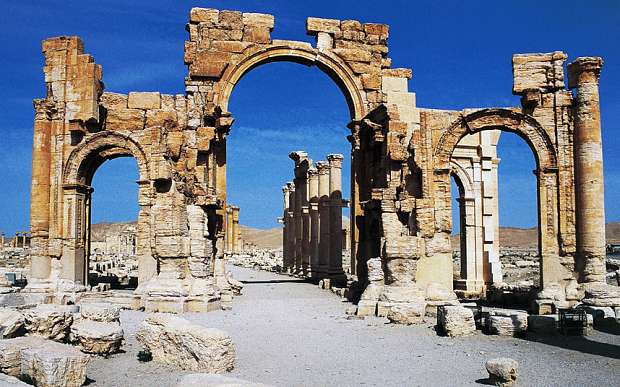Islamic State militants ‘blow up Palmyra’s Arch of Triumph’
A file picture taken on March 14, 2014 shows the famous Arch of Triumph (front) and a partial view of the ancient oasis city of Palmyra, 215 kilometres northeast of the Syrian capital, Damascus.
The Islamic State (ISIS), which now occupies parts of Syria and Iraq, is on a campaign to demolish ancient and cultural structures it deems to be against Islam.
The Syrian antiquities directorate said it was increasingly anxious about Palmyra’s fate under the extremists, noting that the ancient city “stands for of tolerance and multicultural richness, the things ISIS hates”.
Along with ideological opposition to the monuments, ISIS is also funding its “Caliphate” by selling ancient artifacts on the black market, according to reports.
The Syrian Observatory for Human Rights monitoring group and local activist Mohammad Hassan al-Homsi backed up the account.
The arch was once one of the city’s most recognizable sites.
The office of Syria’s president is condemning the destruction of the 2,000-year-old iconic arch in Palmyra by ISIS, which controls the ancient city. The temple consisted of a central shrine within a colonnaded courtyard with a large gateway, within a complex that has other ruins, including an amphitheater and a few tombs.
Professor Abduilkarim says we are left with two choices: sit and watch and lose the city, or the Syrian army advances quickly with the support of the worldwide forces and retakes Palmyra.
UNESCO has called the destruction of the monuments war crimes and says IS seeks to wipe out evidence of Syria’s diverse heritage.
Palmyra is a World Heritage site.
The militants overran Palmyra in May. “IS (Daesh) booby-trapped it several weeks ago”, he told AFP.
‘We are living through a catastrophe. “Since the capture of the city, it has been one shock after another”, he told the agency.
Before the civil war began in Syria in 2011, Palmyra’s ruins were a major attraction, bringing about 150,000 tourists a year to the city.








